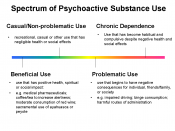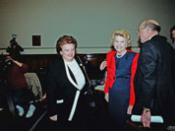While there are many programs designed to help people with substance abuse problems, there are few programs that focus on how substance abuse affects the family members of the user. In the essay, ÃÂSubstance Abuse in Families,ÃÂ published in the Childhood Education Journal in 1999, Rivka Greenberg provides her professional insights on children with substance abusing mothers. Greenberg claims that children with substance abusing mothers often perform badly in the classroom. Greenberg identifies the problem and she provides various possible solutions to educators and administrators. Using many rhetorical strategies, Greenberg persuades her educator and administrator audience to first get involved with the students and second share their knowledge with parents and other professionals. Greenberg utilizes titled sections and moderately formal language in order to appear professional and create a direct organized reading. For the purpose of being credible and being informative, Greenberg uses causal claims and variety of reliable sources to appeal to educators.
Oftentimes, organization and the development of the studentÃÂs education are the primary concerns for instructors. By understanding the values and interests of her audiences, Greenberg formats her essay according to educatorÃÂs needs to advocate her argument. At the same time, the essay would have been more influential, if Greenberg had provided statistical evidence.
In GreenbergÃÂs essay, she appears professional by presenting sections and subsections with headings. There are four main sections: ÃÂEducational Issues,ÃÂ ÃÂIssues in Substance Abuse Treatment,ÃÂ ÃÂEducation and Educators,ÃÂ and ÃÂConclusion.ÃÂ The titles of the main sections appear in bold and are located one space above the paragraph. Under the section, ÃÂIssues in Substance Abuse Treatment,ÃÂ the paragraphs are further divided into four subsections: ÃÂDevelopmental and Education Concerns,ÃÂ ÃÂEnvironmental Influences,ÃÂ ÃÂRole Reversal,ÃÂ and ÃÂOut of Home Placement.ÃÂ The subsections also appear in bold. In contrast with the titles of the main...


